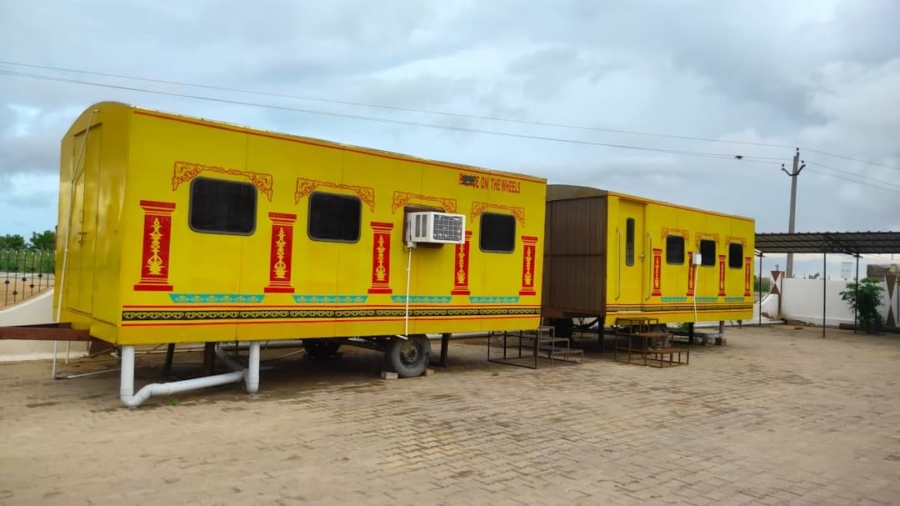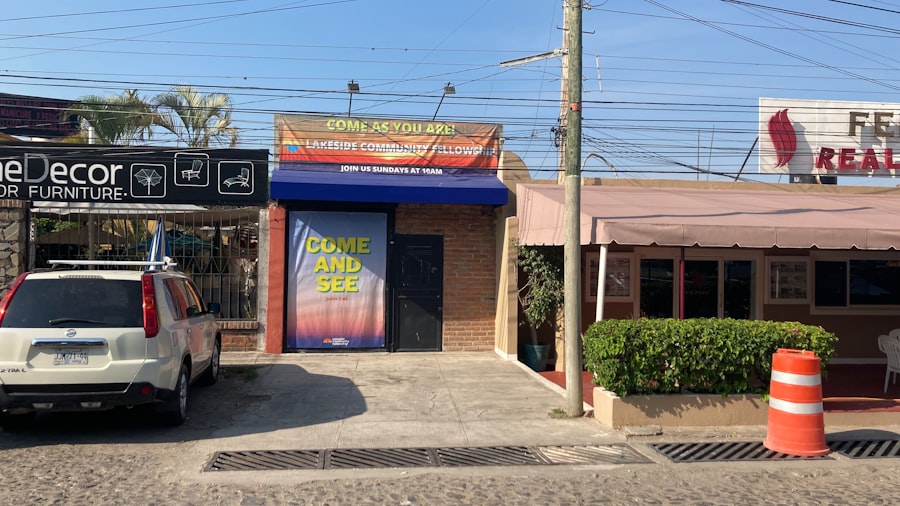Mobile diagnostics represent a transformative approach to healthcare delivery, particularly in remote areas where access to traditional medical facilities is limited. The advent of mobile technology has enabled healthcare providers to reach underserved populations, offering diagnostic services that were previously unavailable.
By leveraging mobile diagnostics, healthcare professionals can conduct tests, monitor health conditions, and provide timely interventions, thereby improving health outcomes in these isolated regions. The integration of mobile diagnostics into healthcare systems has the potential to bridge significant gaps in service delivery. In many remote areas, residents often have to travel long distances to access basic medical care, which can lead to delays in diagnosis and treatment.
Mobile diagnostics can mitigate these challenges by bringing essential services directly to the patients.
As a result, mobile diagnostics are becoming an integral part of public health strategies aimed at improving health equity and ensuring that no one is left behind in the quest for quality healthcare.
Key Takeaways
- Mobile diagnostics play a crucial role in providing healthcare access to remote areas where traditional healthcare facilities are limited or non-existent.
- Challenges in accessing healthcare in remote areas include lack of infrastructure, healthcare professionals, and medical supplies, as well as geographical barriers.
- Mobile diagnostics have a significant impact on remote area healthcare by providing timely and accurate medical testing, early disease detection, and improved treatment outcomes.
- Advantages of mobile diagnostics in remote areas include increased accessibility to healthcare, cost-effectiveness, and the ability to reach underserved populations.
- Technologies used in mobile diagnostics include portable medical devices, telemedicine, and mobile health applications, which enable healthcare providers to deliver medical services remotely.
Challenges in Accessing Health Care in Remote Areas
Accessing healthcare in remote areas is fraught with numerous challenges that can severely impact the well-being of residents. One of the most significant barriers is geographical isolation. Many rural communities are situated far from urban centers where hospitals and specialized medical services are located.
This distance can deter individuals from seeking care, especially when they lack reliable transportation or face financial constraints associated with travel. The time and resources required to reach a healthcare facility can lead to missed appointments and untreated health conditions, exacerbating health disparities. In addition to geographical barriers, remote areas often suffer from a shortage of healthcare professionals.
Many qualified practitioners prefer to work in urban settings where they can benefit from better infrastructure, professional development opportunities, and higher salaries. This results in a lack of trained personnel in rural regions, leaving communities without adequate medical support. Furthermore, the existing healthcare facilities may be under-resourced, lacking essential equipment and supplies necessary for effective diagnosis and treatment.
These challenges create a cycle of neglect that can lead to preventable diseases becoming endemic in these populations.
The Impact of Mobile Diagnostics on Remote Area Health Care
The introduction of mobile diagnostics has had a profound impact on healthcare delivery in remote areas. By providing on-site testing and monitoring capabilities, mobile diagnostic units can significantly reduce the time it takes for patients to receive results and begin treatment. For instance, mobile clinics equipped with diagnostic tools can perform blood tests, imaging studies, and other essential evaluations right within the community.
This immediacy not only enhances patient satisfaction but also allows for quicker public health responses to emerging health threats. Moreover, mobile diagnostics facilitate the collection of valuable health data that can inform public health initiatives. By conducting screenings and assessments in remote areas, healthcare providers can identify trends and patterns that may not be visible through traditional healthcare channels.
This data can be instrumental in shaping targeted interventions, allocating resources more effectively, and ultimately improving health outcomes across entire populations. The ability to monitor health trends in real-time empowers local health authorities to respond proactively rather than reactively, fostering a more resilient healthcare system.
Advantages of Mobile Diagnostics in Remote Areas
Mobile diagnostics offer several advantages that make them particularly well-suited for addressing the unique challenges faced by remote communities. One of the primary benefits is increased accessibility to healthcare services. By bringing diagnostic capabilities directly to patients, mobile units eliminate the need for long-distance travel, thereby reducing barriers related to transportation and cost.
This accessibility is crucial for vulnerable populations who may otherwise forego necessary medical care due to logistical challenges. Another significant advantage is the ability to provide culturally sensitive care tailored to the specific needs of local populations. Mobile diagnostic programs often employ local health workers who understand the community’s cultural context and can communicate effectively with residents.
This familiarity fosters trust and encourages individuals to seek care without fear of stigma or misunderstanding. Additionally, mobile diagnostics can be designed to address prevalent health issues within specific communities, such as infectious diseases or chronic conditions like diabetes and hypertension. By focusing on local health priorities, these programs can deliver more relevant and impactful services.
Technologies Used in Mobile Diagnostics
The technologies employed in mobile diagnostics are diverse and continually evolving, reflecting advancements in medical science and telecommunications. Portable diagnostic devices have become increasingly sophisticated, allowing for a wide range of tests to be conducted outside traditional clinical settings. For example, handheld ultrasound machines enable practitioners to perform imaging studies on-site, providing immediate insights into a patient’s condition without the need for referral to a hospital.
Moreover, point-of-care testing (POCT) devices have revolutionized how diagnostic tests are conducted in remote areas. These compact devices can perform various tests—such as blood glucose monitoring, rapid HIV testing, and even genetic screenings—within minutes, delivering results directly to patients. The integration of telemedicine platforms further enhances mobile diagnostics by allowing healthcare providers to consult with specialists remotely when complex cases arise.
This combination of portable technology and telehealth capabilities ensures that patients receive comprehensive care despite geographical limitations.
Case Studies of Successful Mobile Diagnostic Programs
Reaching Underserved Populations in Rural India
One notable example is the “Mobile Health Clinics” initiative implemented in rural India. These clinics utilize customized vans equipped with diagnostic tools and telemedicine capabilities to reach underserved populations. The program has successfully conducted thousands of screenings for communicable diseases such as tuberculosis and malaria while also providing maternal and child health services.
Combating Disease Outbreaks in Sub-Saharan Africa
Another compelling case study comes from sub-Saharan Africa, where organizations like Médecins Sans Frontières (Doctors Without Borders) have deployed mobile clinics equipped with diagnostic technologies to combat outbreaks of diseases such as Ebola and cholera. These clinics not only provide immediate testing and treatment but also serve as educational platforms for local communities about disease prevention and health promotion.
Improving Health Outcomes and Saving Lives
The results of these mobile diagnostic programs have been remarkable; early detection rates have increased significantly, leading to timely treatment and improved health outcomes. The rapid response facilitated by mobile diagnostics has proven crucial in controlling outbreaks and saving lives during public health emergencies.
Future of Mobile Diagnostics in Remote Area Health Access
The future of mobile diagnostics appears promising as technology continues to advance and the demand for accessible healthcare grows. Innovations such as artificial intelligence (AI) and machine learning are poised to enhance diagnostic accuracy and efficiency further. For instance, AI algorithms can analyze imaging data from portable devices, assisting healthcare providers in making more informed decisions quickly.
This integration of advanced technology could lead to even more precise diagnoses and tailored treatment plans for patients in remote areas. Additionally, the expansion of internet connectivity through initiatives like satellite internet could significantly enhance the capabilities of mobile diagnostic programs. Improved connectivity would enable real-time data sharing between mobile units and central health databases, facilitating better tracking of health trends and resource allocation.
Furthermore, as public awareness of health issues increases globally, there may be greater investment in mobile health initiatives from governments and non-governmental organizations alike. This support could lead to more comprehensive training programs for local health workers and expanded access to cutting-edge diagnostic technologies.
The Importance of Mobile Diagnostics in Improving Health Care in Remote Areas
Mobile diagnostics play a crucial role in transforming healthcare delivery in remote areas by addressing significant barriers to access and providing timely interventions for underserved populations. The combination of advanced technologies with culturally sensitive care models has proven effective in improving health outcomes and fostering trust within communities. As we look toward the future, continued innovation and investment in mobile diagnostic programs will be essential for ensuring equitable access to quality healthcare for all individuals, regardless of their geographical location or socioeconomic status.
The ongoing evolution of this field holds great promise for enhancing public health systems worldwide and ultimately saving lives through improved access to essential medical services.




